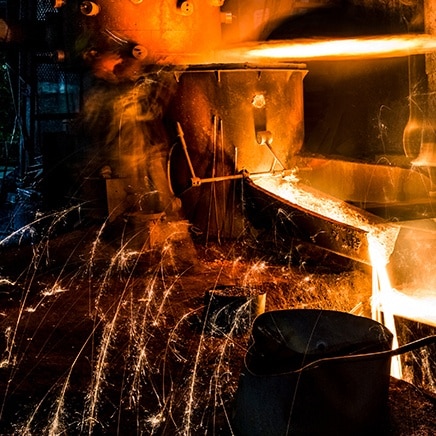In today’s competitive environment, manufacturers and plant operators must efficiently monitor their assets, extract maximum performance out of them, and respond to breakdowns quickly. However, such a scenario is rare within businesses that continue to operate in a conventional, disconnected environment. These businesses often lack clear asset performance tracking processes. Machine inspections usually happen through manual visits that offer little or no control over asset health and performance management.
While M2M systems do offer a certain degree of asset or process control, these technologies often work in isolation and address limited business requirements. The disconnected environment ultimately results in poor visibility, leading to underutilized assets and offering no control over preventing sudden breakdowns.
However, businesses can overcome these challenges by leveraging the IIoT-enabled remote monitoring framework and achieve substantial improvements in asset management, operational efficiency, and cost. Remote monitoring offers a connected environment for businesses to gain complete visibility into their assets and facilities without being physically present at the location.
What is remote monitoring?
Remote monitoring is the ability to visualize, track, and control assets and facilities without having to be on-premise. This capability is made possible through numerous technologies such as wireless networks, sensors, transmitters, receivers, data processing, cloud storage, and analytics.
Together, these technologies provide greater visibility into asset performance, predict equipment failure, and reduce resource consumption, enabling cost-effective and efficient operations all the time.
Benefits of remote monitoring
Remote monitoring using an ecosystem of IIoT products offers a range of benefits to businesses. These benefits can be in the form of:
Centralized monitoring
Thanks to cloud technology, remote monitoring with IIoT enables you to access asset information from anywhere, anytime, and on any device, even if your assets are in different physical locations. As such, you can monitor and analyze the performance and health of assets located in different geographies from your office or even when you are on the go.
Accurate monitoring
Instead of recording data manually, entering it into a spreadsheet, and later performing analysis, a smart sensor installed for remote monitoring collects and stores data from an asset digitally, which reduces the chances of errors. Besides, data collection through smart sensors also ensures accuracy in collecting repetitive data over manual methods.
Improved team efficiency
Since remote monitoring readily offers visibility into asset performance and health, teams are not required to regularly commute to a location simply to keep a check on the process/equipment. Instead, they can set up intervals to record data electronically and monitor everything remotely.
Faster response to incidents
Remote monitoring allows you to monitor the health of your assets continuously and also detect anomalies in real-time. Processing this performance and health data using analytics further provides insights on predictive maintenance so that you can repair assets before they fail and reduce the downtime significantly.
Compliance to regulatory requirements
Many industries, certifications, and regulations require regular and constant monitoring of equipment. With a remote monitoring system, you will have a steady stream of data flowing into the cloud storage that is easy to access and can assist with regulatory compliance.
Business continuity in the event of disasters
With disasters such as the recent Coronavirus outbreak, ensuring the safety and well-being of your employees is critical. However, at the same time, your business must also continue running, and that is where remote monitoring helps. It allows your teams to monitor assets safely from the comfort of their homes, adhering to social distancing measures while also ensuring business continuity.
Lower operating costs
A smart remote monitoring system offers intelligent insights that allow you to optimize operations and gain maximum asset productivity, which in turn translates to cost savings and improved profitability.
Ready to implement remote monitoring?
For most companies, IIoT-enabled remote monitoring is usually the first step towards embracing a connected environment and reaping the benefits of intelligent asset tracking. However, implementing remote asset management has its share of challenges and risks that you must anticipate and mitigate to be successful.
From defining the scope of transition, and determining system integration to identifying project value and return on investments, migrating to a remote monitoring environment requires a well-thought-out plan.
Are you interested in equipping your facilities and assets with a remote monitoring system? Read our latest whitepaper and find out how to successfully enter the IIoT realm and monitor your systems remotely.


